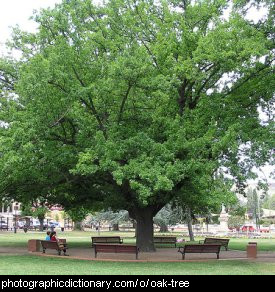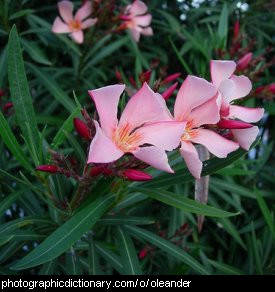Scientific name: quercus robur
Scientific name: nerium oleander
Oleanders, also known as rose laurel, are a pretty, evergreen flowering shrub. They usually have pink or white flowers.
Oleanders are one of the most poisonous plants known. Their sap is toxic, and even the dead, dried plant is dangerous. Horses have been known to die from eating oleander leaves. Even a single leaf might be enough to kill a small child.
Scientific name: olea europaea
Olives are the fruit of a small, slow-growing tree. They are originally from the Mediterranean region and grow best in poor soils in Mediterranean climates. Olives can be grown easily from both seeds and cuttings, but trees grown from seed don't always grow good fruit.
Olives can't be eaten fresh from the tree, they are too bitter. Olives need to be prepared by soaking them in salty water or otherwise preparing them to be eaten. Some types of olive can be pressed and oil made from them.
Scientific name: allium cepa
Onions are a vegetable. There are many different kinds of onions, ranging in size and colour from purple to red to white to green.
Onions are used in almost every kind of food, raw or cooked. They can be very sharp when they are raw and many children do not like raw onions, but when they are cooked they are quite sweet.
Scientific name: family: orchidaceae
Orchids are a very big plant family. There are more different kinds of orchid than there are different kinds of bird. Orchids are found everywhere except deserts and glaciers. Orchids are grown for their pretty flowers. You can tell an orchid mainly by one of its petals being somehow different to all the others.








